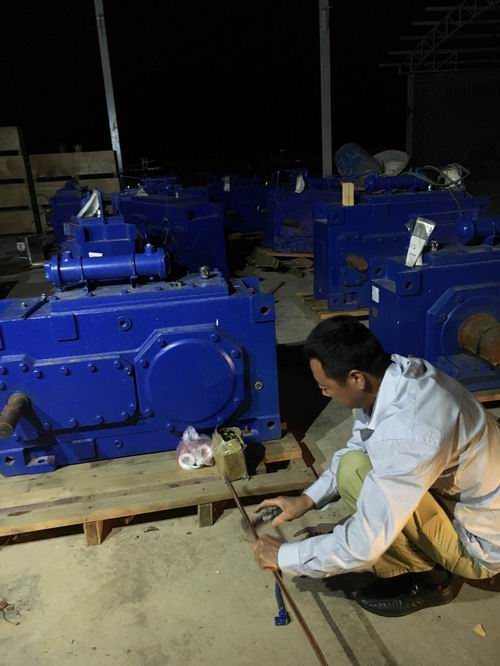Gearbox reducers are widely used in various industries. What are the installation and precautions for reducer? Paying attention to installation problems and problems during use can save users money and time.
- The transmission coupling of the reducer should be equipped with protective devices when necessary, such as if there are protrusions on the coupling or the use of gears, sprockets, etc. If the output bearing is subject to a large radial load, the reinforced type should also be selected.
- There are many optional types of couplings used in reducers, but it is best not to use rigid fixed couplings. The installation of this type of coupling is more difficult. Once installed improperly, the load will increase. It is easy to cause damage to the bearings and even cause the output shaft to break.
- When installing the transmission parts on the output shaft of the reducer, you must pay attention to gentle operation. It is prohibited to use tools such as hammers for rough installation. It is best to use the assembly fixture and the internal thread of the end shaft for installation, and tighten the transmission with the strength of the bolts. The parts are pressed into the reducer, which protects the internal parts of the reducer from damage.
- Before running the reducer, prepare it for operation. Remove the vent hole screw plug of the oil pool and replace it with a vent plug. Open the oil level plug screw to check the oil line height. Add lubricating oil beyond the oil level plug screw to the hole. overflow, and then screw on the oil level plug and confirm that it is correct, you can start the test run.
- The installation position of the reducer must ensure the operator’s operation, including easy access to the cursor, vent plug and oil drain plug. After the installation of the reducer is completed, the inspector should comprehensively check the accuracy of the installation position in sequence and determine the reliability of each fastener, etc.
- The test run time of the reducer should not be less than two hours. The standard for normal operation is smooth operation, no vibration, no noise, no leakage, and no impact. If any abnormality occurs, it should be eliminated in time.
- The fixation of the reducer is very important. To ensure smoothness and firmness, generally speaking, we should install the reducer on a horizontal foundation or base. At the same time, the oil in the oil drain tank should be able to be drained, and the cooling air circulation should be smooth. If the fixation of the reducer is not good and the foundation is unreliable, phenomena such as damage and vibration will occur, and the bearings and gears will suffer unnecessary damage.
- When installing the reducer, pay special attention to the alignment of the transmission center axis. The alignment error cannot exceed the compensation amount of the coupling used in the reducer. After the reducer is aligned as required, a more ideal transmission effect and a longer service life can be obtained.




